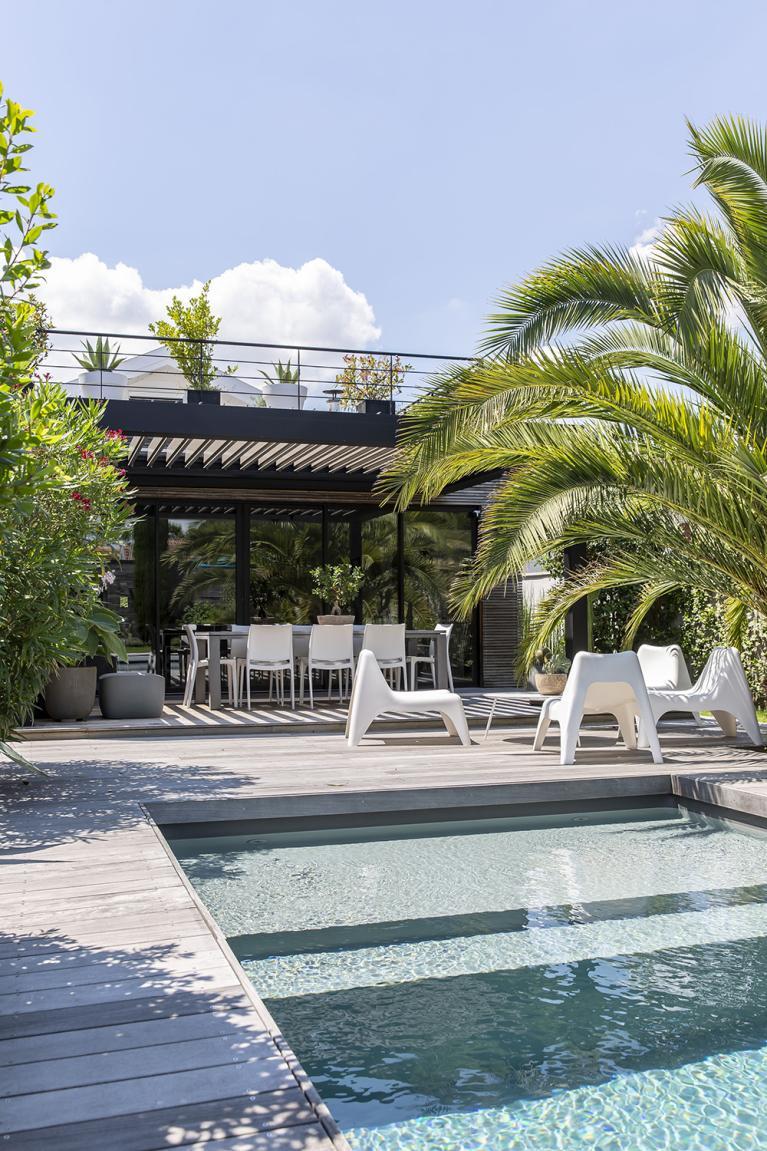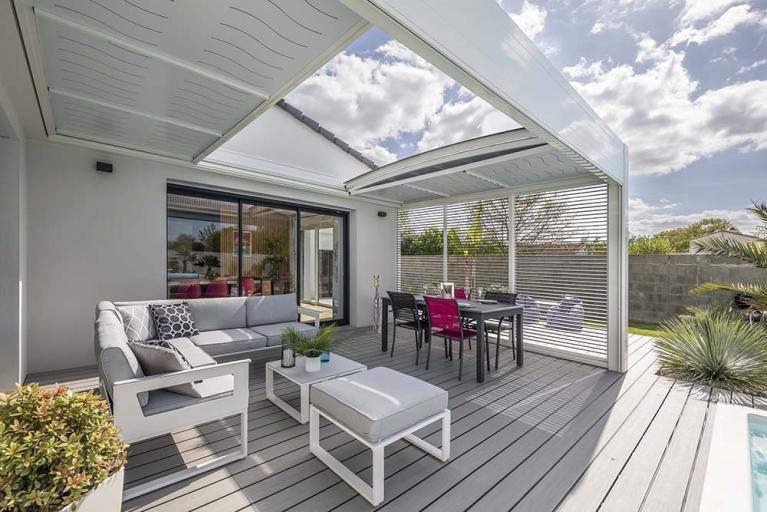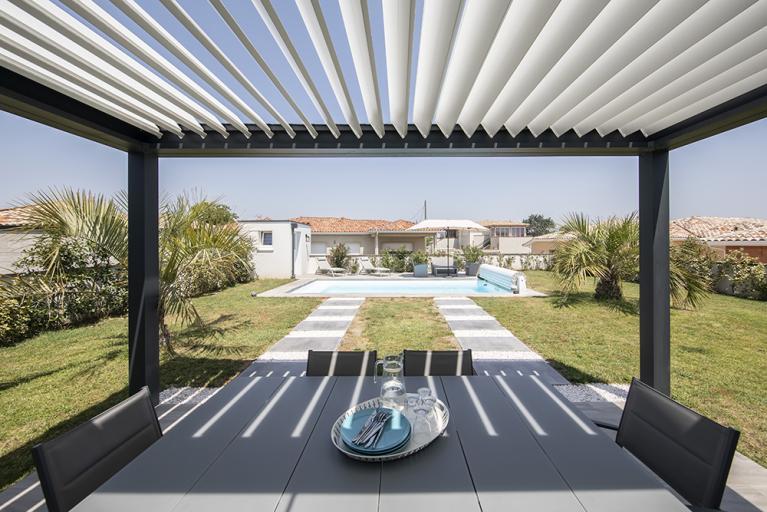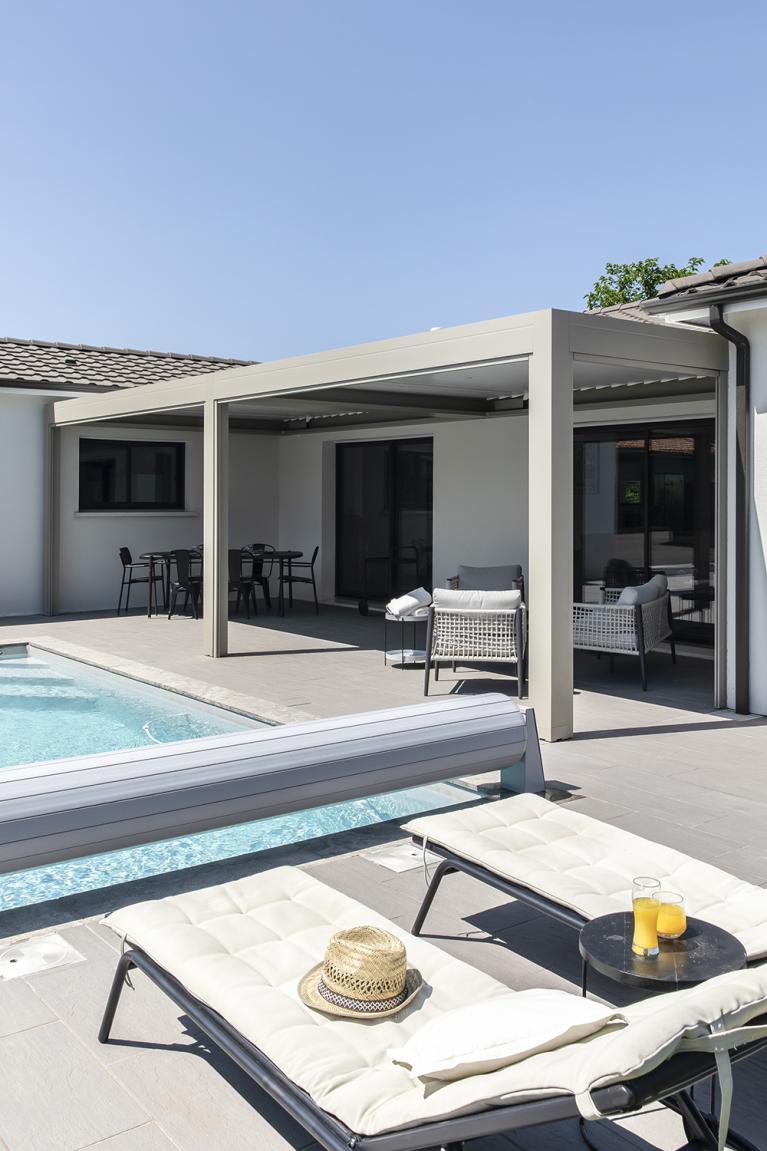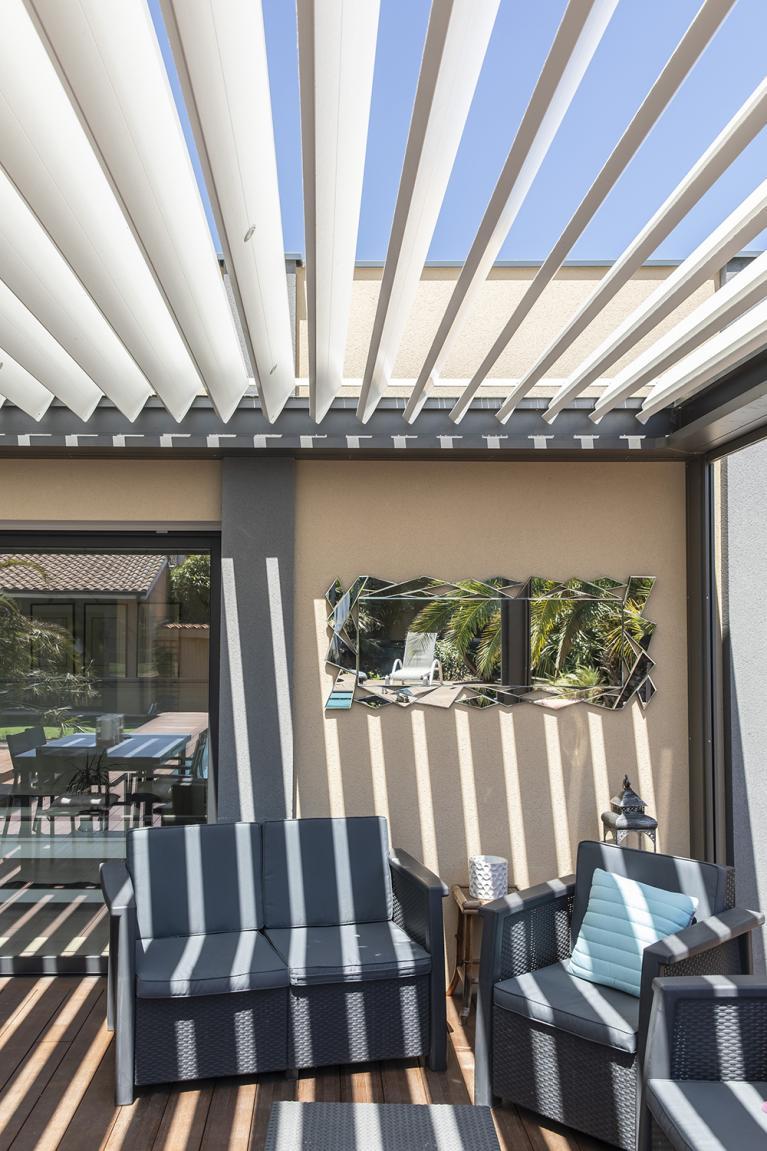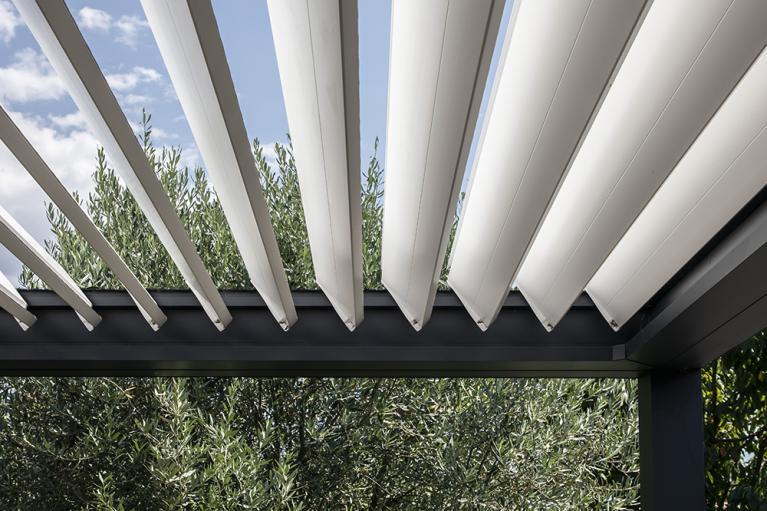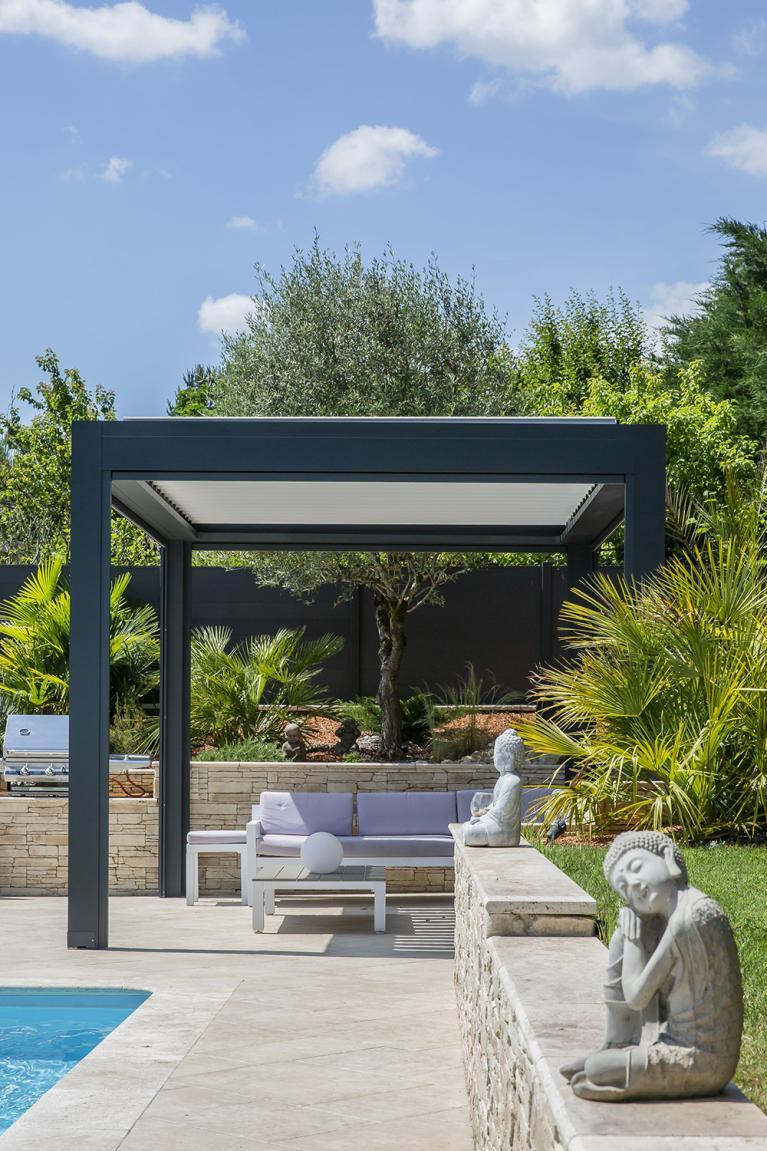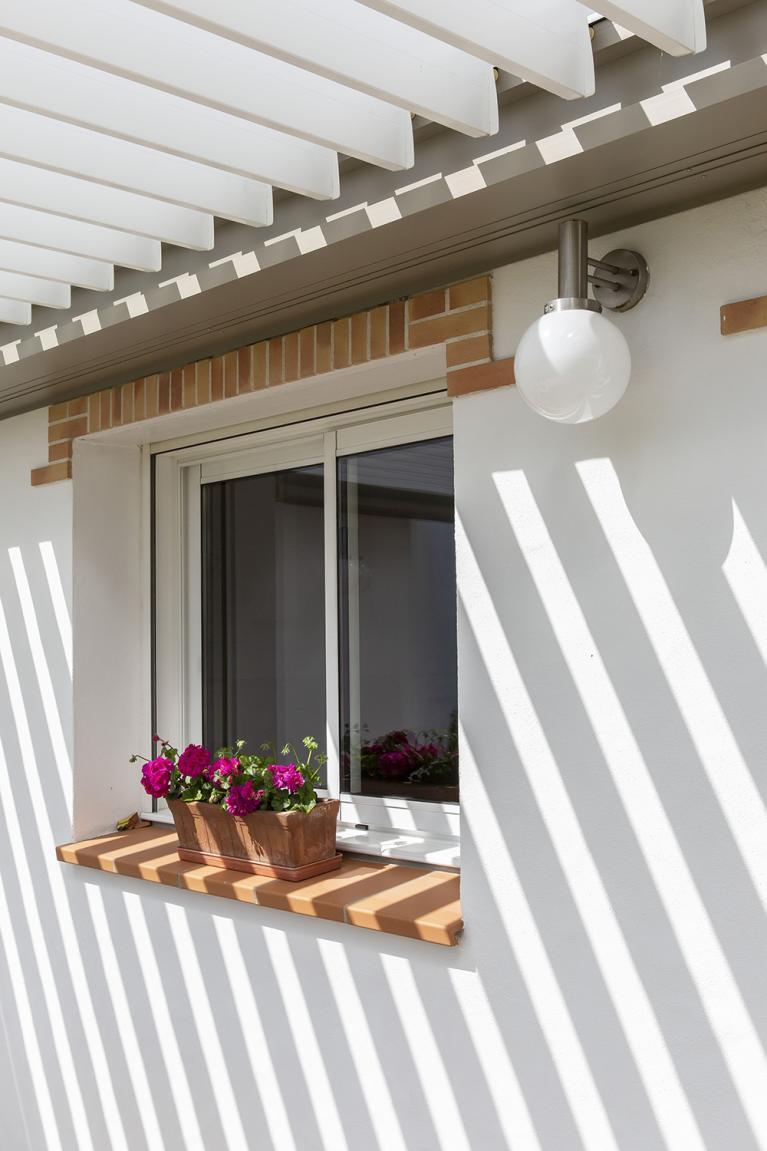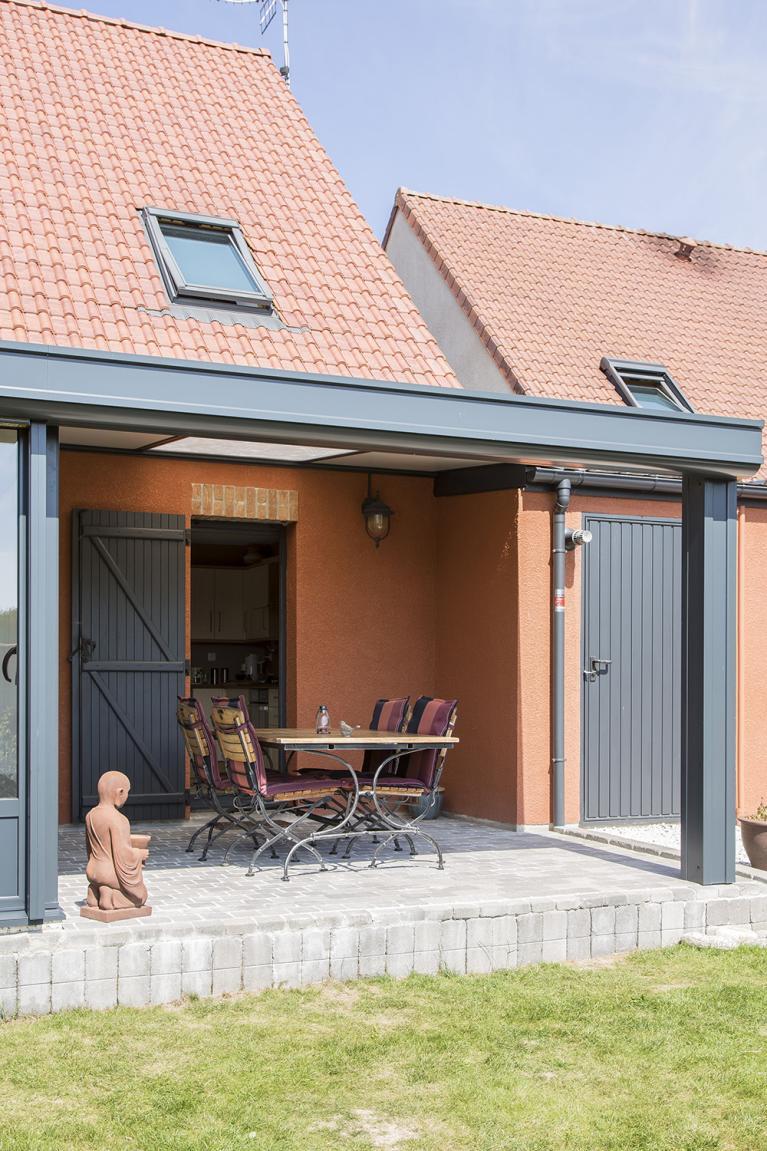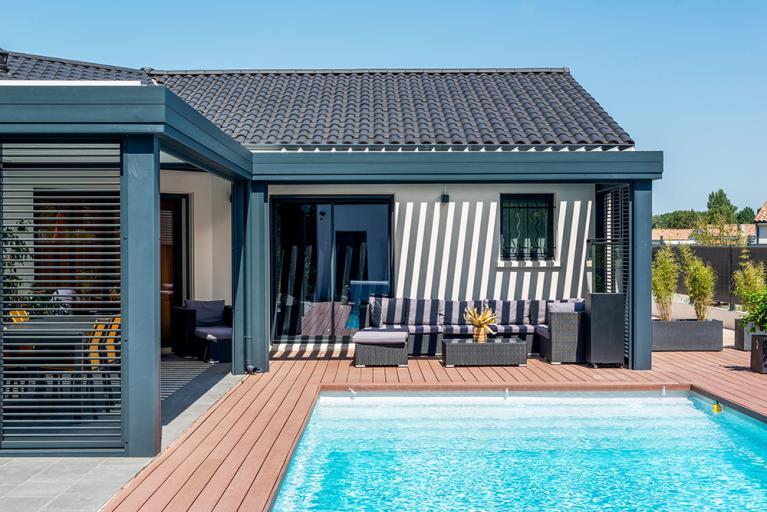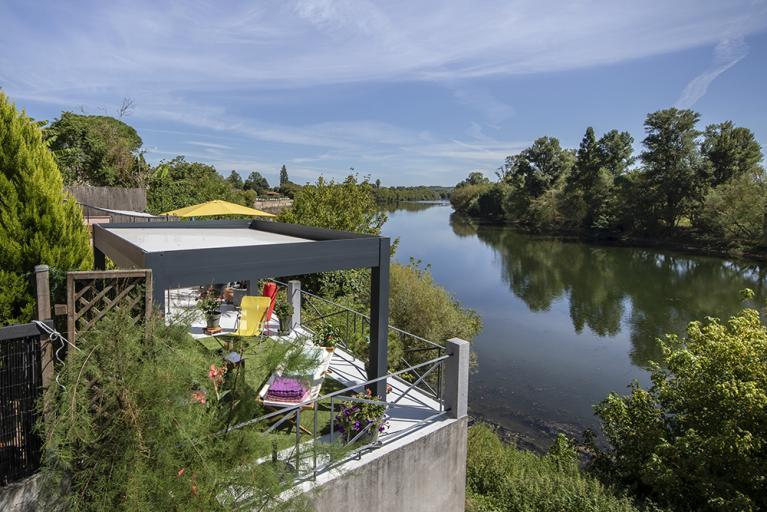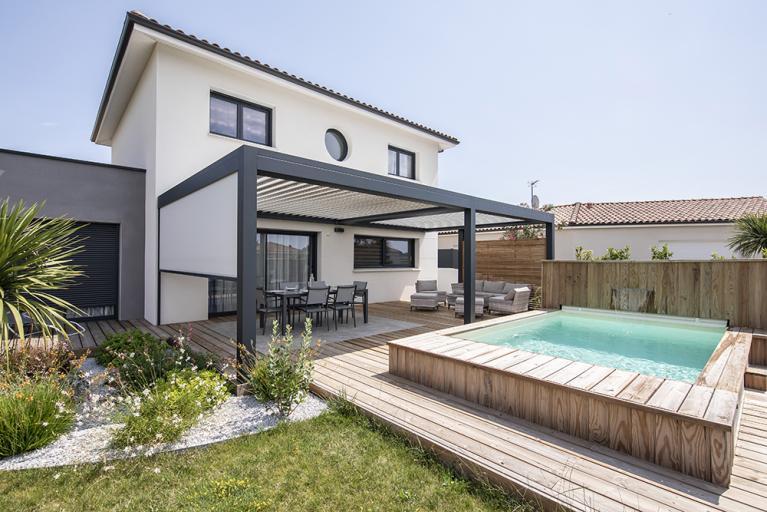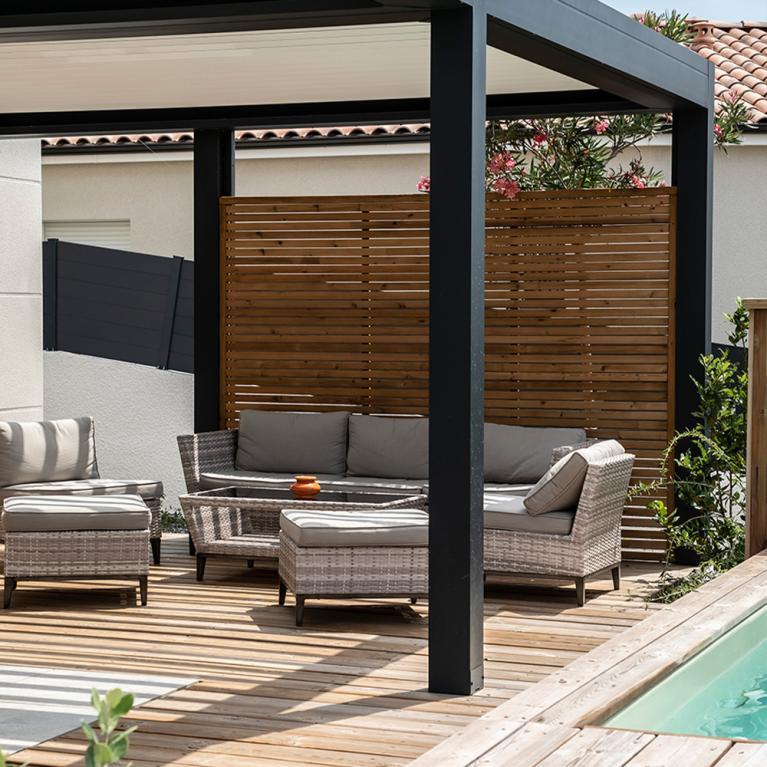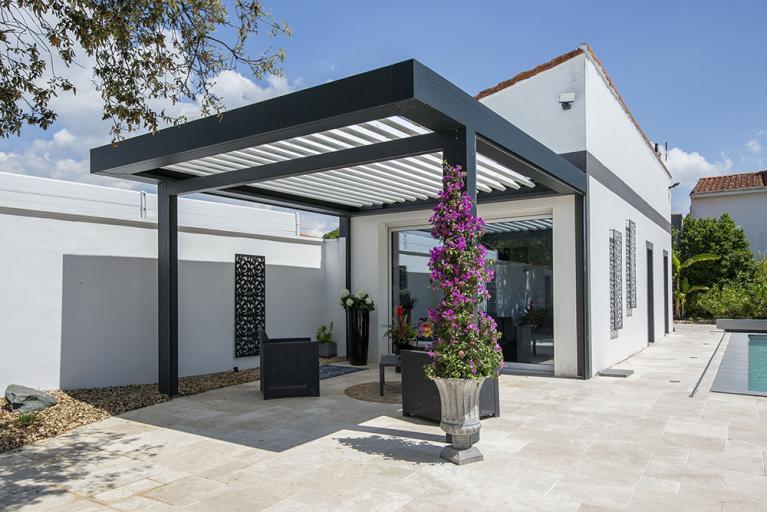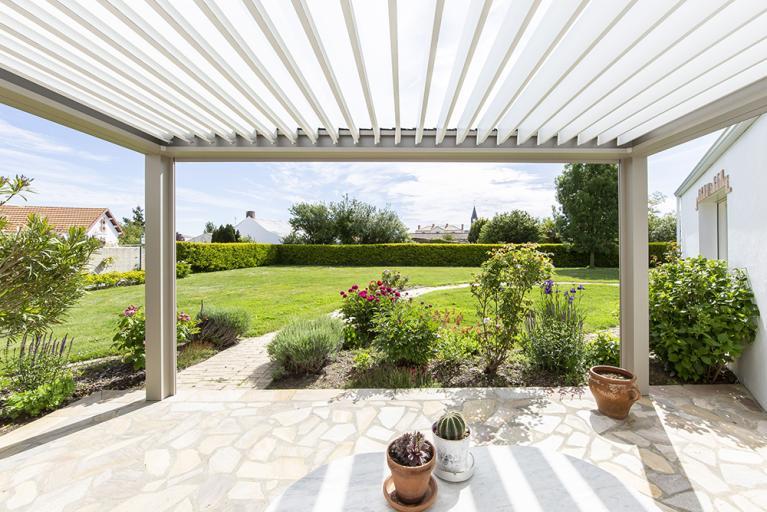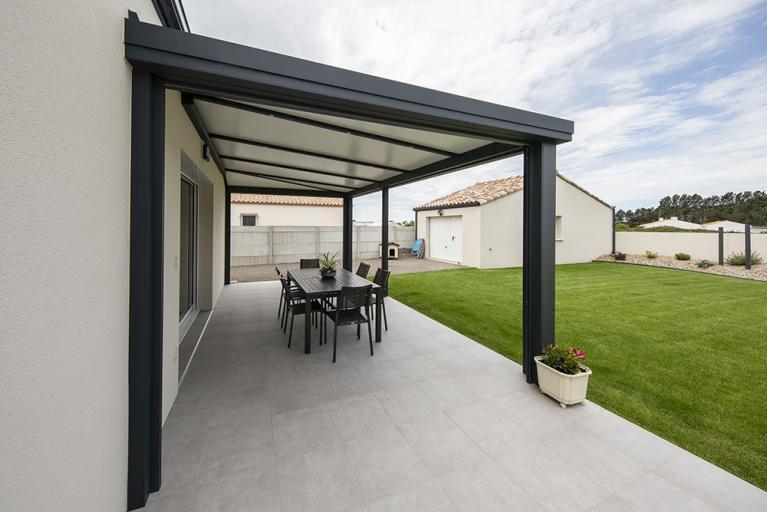Plants for pergolas: what to choose?
Are you planning to install a pergola to make the most of your garden while being sheltered from the sun and bad weather? Perhaps it's already been built? In either case, as the pergola is an outdoor space, you're probably wondering how to plant it. How can you create a natural space that combines plants and relaxation? Let's take a look at what plants to put on a pergola.
Climbing plants to enhance your pergola
Italian pergolas were originally built to shade the pathways of lush gardens. Climbing plants grew freely to protect passers-by from the sun.
Nowadays, aluminium or wooden pergolas are more modern. Some are even motorised and connected. Others, like the bioclimatic pergola, allow natural ventilation to be controlled. However, it's not uncommon for plants to climb inside to enhance the outdoor space.
When choosing climbing plants for pergolas, there are a number of criteria to consider:
- your needs ;
- decoration ;
- the region.
Let's take a look at these three main points.
Which plant is right for you?
Where will your pergola be installed? Is it lean-to or freestanding ? What functions do you see for it? Do you have young children or pets who could be poisoned by the berries of climbing plants? Do you want a decorative plant that flowers several times a year? Or would you prefer a very leafy, bushy climber to create an intimate cocoon?
This list of questions is not exhaustive. It will give you a good idea of what you need.
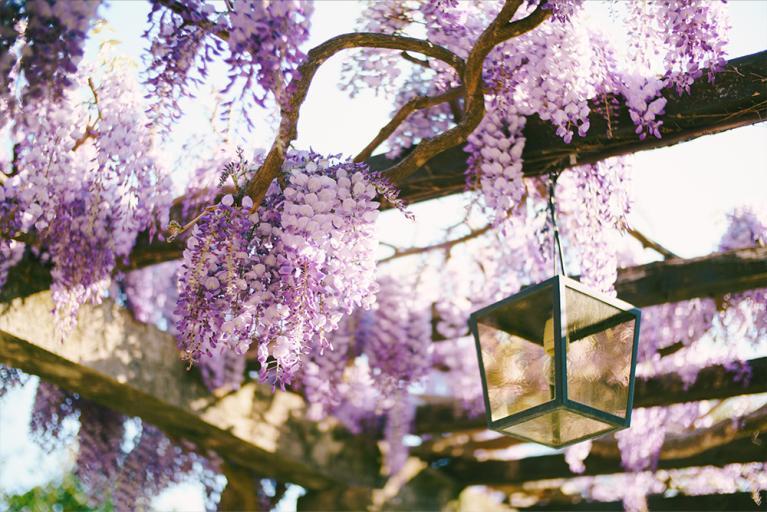
If your pergola is at the end of the garden, you won't choose the same climber as if it's up against your house. Depending on the variety, they may attract wasps or release pollen into the air as soon as the sun comes out. At that time, avoid plants with small flowers and fruit.
Similarly, if you plan to eat under your pergola, you'll want to avoid planting a variety that sheds its petals quickly or sows leaf dust on your plates. Opt for evergreen climbers such as bignone or honeysuckle.
Do your neighbours seem intrusive and you want to protect yourself quickly from their invasive glances? Choose a fast-growing plant such as a climbing rose, evergreen clematis or Virginia creeper. The same principle applies if you want to create a shady area quickly.
A plant decoration on your pergola
As well as practical needs, we also have aesthetic needs. There are plants that line fronts and roofs, such as ivy and hops. Their green foliage grows very quickly.
There are also climbing plants whose flowers form bunches, such as wisteria. Others have small bell-shaped flowers: bignone, Virginia trumpet or cobia.
You can mix several varieties to create a harmonious blend around and on your pergola.
If you want to add a sweet fragrance to your pergola, choose honeysuckle, rose, clematis and wisteria. You'll also find various jasmines and Chinese dregs (Wattakaka) with their bewitching fragrance. For a fragrant mix of colours, sweet peas grow quickly and flower profusely all summer long!
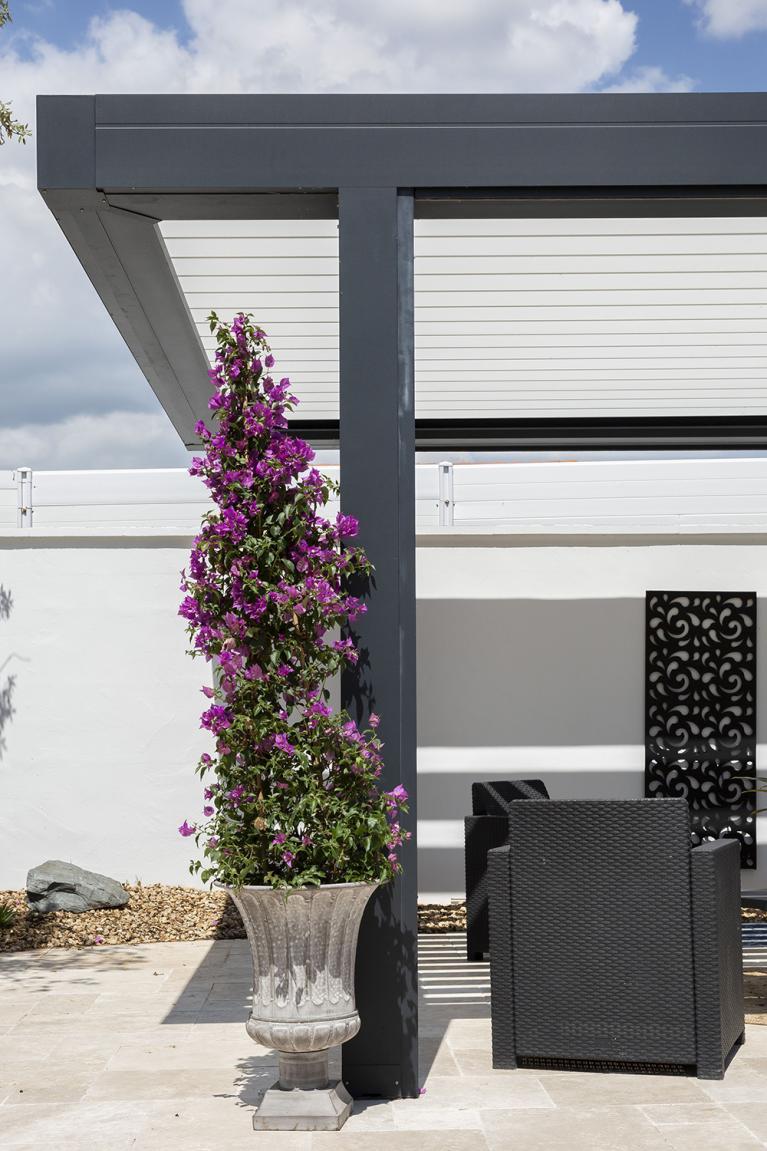
Choosing your pergola plant according to your region
Whether you live in a hot or rainy region, the plant you choose must be able to adapt to the soil in your garden. Taking climatic conditions into account is very important if you are to make the best choice.
There are varieties that do not fear frost or very low temperatures. These are known as hardy plants. Other species are resistant to bright sunshine and stifling heat.
You should also consider the wind exposure of your pergola. Some plant varieties are more resistant to strong winds than others.
Discover the inspirations
Read all the articles in the magazine
You have a project?
Would you like a personalised 3D study and a free quotation? Contact us by clicking below.
AKENA is...
Over 40 years of experience
Founded in 1981 by one man, we now have more than 500 employees dedicated to making your project a success.
Made in France
A historic site and two factories covering more than 25,000 m² in Dompierre-sur-Yon in the Vendée region (85)
Innovative and tailor-made products
At AKENA, we are brimming with new ideas to improve and enhance our products.
The European leader in conservatories, pergolas...
But not only! AKENA also offers a complete range of carports and pool houses.
